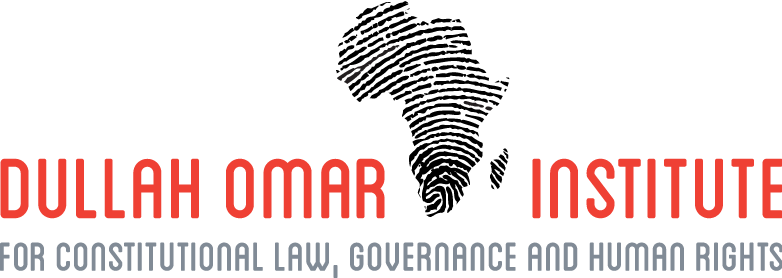A radical reconfiguration of the local government fiscal framework is required, not incremental tinkering
The medium term local government fiscal framework refers to the projections of aggregate revenue, expenditure, borrowing and debt of all municipalities over three years. Crafting a coherent local government fiscal framework is contingent on a coherent local government functional framework so that ‘finance can follow function’. The functional framework outlines the powers and functions of district and local municipalities, which translates into their expenditure responsibilities.
However, issues relating to powers and functions, and the role of the three categories of municipalities, have languished unresolved, for more than a decade. This situation cannot be resolved in a piecemeal fashion without also considering the role of provincial governments. In 2008, the former national Department of Provincial and Local Government had initiated a policy process on the system of provincial and local government, which would then update the 1998 White Paper on Local Government. More than a decade later, these issues are yet to been dealt with. For example, the Financial and Fiscal Commission (FFC) has raised ‘serious questions about the effectiveness of district municipalities, especially with regard to their ability to carry out their respective mandates and indeed their relevance in the intergovernmental make-up of the country at present'. Decisions on the shifting of functions across spheres have largely occurred on an incremental sectoral basis, without sufficient consideration of their collective impact on the local government's functional framework as a whole.
Some of the key premises underpinning the 1998 White Paper no longer obtain, such as the assumption that local government in aggregate could raise 73% of its own revenue, and new policy challenges have become foregrounded since then including the climate emergency and the imperative of a just transition from centralised carbon-based energy production to decentralised renewable energy production. In 1998, South Africa had one of the cheapest bulk electricity prices globally, but Eskom’s operational and governance dysfunctions since have led to a marked escalation of bulk electricity tariffs well in excess of inflation, with the result that it is now mid-priced. Municipal electricity surpluses have been significantly eroded, compounded by more affluent users opting to leave the grid in the face of rising consumer tariffs. Recent policy reforms aim to increase private sector investment in embedded generation, and permit municipalities to source from them rather than Eskom. Also, the long proposed unbundling of Eskom into separate generation, transmission and distribution entities, is gathering momentum. With the longer-term transition into green energy, it is clear that business models and cost structures will change. In the medium term, load-shedding will continue to be a brake on economic growth and detract from municipal revenue bases, while Eskom tariffs are likely to increase substantially. On the other hand, the price of renewable energy is likely to be on a downward trend as technologies improve and the scale of decentralised production increases. In the long term, there will be little place for municipal electricity surpluses to cross-subsidise low-income households which do not qualify as indigent, as well as other services. Furthermore, as businesses and more affluent consumers gradually defect from the electricity grid to alternative energy sources, only poorer consumers will remain, further eroding surpluses and room for cross-subsidisation. Municipalities will have to adjust their strategies to create an incentive for energy users to stay on the grid (including tariff setting or possibly corporatisation of electricity functions).
This situation is compounded by the perception among a sample of municipalities in the Western Cape (in a study completed by the School of Public Leadership at Stellenbosch University) that the National Energy Regulator of South Africa does not fully comprehend the impact of its determinations on municipal sustainability. A case in point is reflected in Swartland Municipality’s 2020/2021 MTREF Budget Report that notes that NERSA’s consultation paper with proposed guideline electricity tariff adjustments for municipalities on 20 March 2020 contained inconsistencies in the calculation methodology that would have led to the ‘almost the complete elimination of the net surplus derived from electricity sales and would severely impact the financial viability of all municipalities’. NERSA conceded after Swartland Municipality lodged an objection against the application of Eskom-related tariffs for reselling and reverted to the typical municipal tariff structures as applied in previous years in the subsequent guideline tariff determination. This aptly illustrates the need for more local government voices in national decision-making and reform processes which affect them. NERSA’s approval of a 6.90% increase in electricity bulk purchases in 2020/2021 but with a restriction on the average tariff municipalities may charge users to 6.43% means that local municipalities could not pass the full increase on to their customers, thus reducing their surpluses. This places additional pressure on the levels and quality of services municipalities are able to deliver, as well as reduced internal funding for new infrastructure development, rehabilitation and upgrade.
Long-term water consumption patterns are also changing markedly, driven by the intensified need for water demand management as drought-like conditions and other adverse weather events become more frequent, resulting in permanent drops in consumption. Similar to the electricity industry, far-reaching reforms have been proposed in the water industry with the creation of an independent economic regulator, thus separating regulation from the roles of policymaker, planner, investor and operators of water resources infrastructure. This would also entail reviewing pricing (including raw water pricing) and service standards as well as investigating the feasibility of a national water resources infrastructure agency which was proposed by the National Development Plan 2030. As decentralised energy production eliminates monopoly rents on electricity sales, this will place additional pressure on water prices to rise, not only for demand management purposes, but to generate operating surpluses.
In the same vein, the additional transport costs entailed by regionalisation of landfill sites (as per national policy) also materially affect municipal cost structures, with the implication of higher tariffs, which would reduce their affordability for households. Simultaneously, certain national policies are undermining municipal revenue sources. For example, the Administrative Adjudication of Road Traffic Offences (AARTO) Act (No 46 of 1998) which came into full effect in July 2021, will undermine municipal revenue from fines, a small but significant revenue source for many municipalities.
In December 2020, a special lekgotla of the Budget Forum (the intergovernmental structure established to facilitate formal consultation on local government finances) resolved that National Treasury, the national Department of Cooperative Governance and SALGA should review the local government fiscal framework. In the past, incremental reviews have been done predicated largely on the current functional framework configuration, but a more thorough review based on a streamlined, differentiated and clearly defined long-term functional framework and an associated change management plan is called for. Past reviews typically focus on the technical details of the Local Government Equitable Share formula and capital grant frameworks, whereas the vertical division of revenues across national, provincial and local spheres is also crucial, but it is regarded as a political decision. Yet it would be critical to align the vertical division of revenue with the local government functional framework.
Unlike the 1998 White Paper on Local Government which relied on assumptions in lieu of credible empirical data, this review should be based on twenty years of evidence relating to the fiscal effort gap, the expenditure inefficiency gap, the transfer gap and the unfunded or underfunded mandate gaps.
The following recommendations flow from the above analysis:
- The local government functional framework should be reviewed in light of 25 years of local government experience and the implementation of far-reaching reforms in electricity and water industries. The revised functional framework should inform a fundamental review of the local government fiscal framework.
- A process of this magnitude should not just involve SALGA, provincial departments of local government and provincial treasuries, but also consultation with individual municipalities so that the differentiated impacts can be understood, and diverse municipal voices can be heard.
BY Prof Tania Ajam School for Public Leadership, Stellenbosch University

